Archive for ‘Books and Reading’ Category
Paper Doll To the Rescue: How To Save Wet Books & Documents
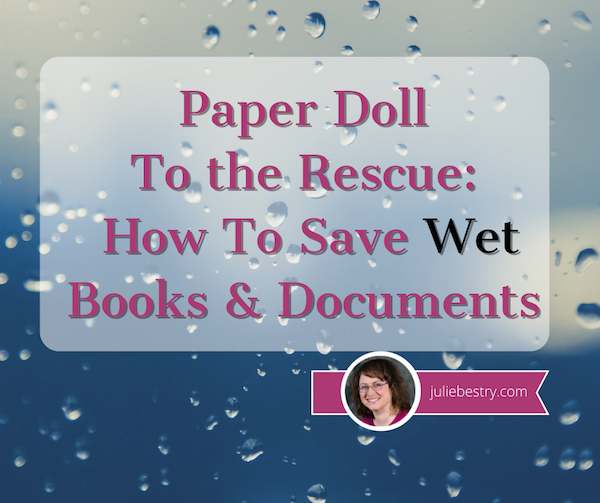
For something that’s supposed to be so good for us, water can cause quite a bit of trouble.
If you drop your cell phone in water, people will rush to tell you to stick it in rice, as though your Samsung or iPhone was a nice piece of baked salmon. It seems everyone has heard and shared that little hack for rescuing wet electronics.
For what it’s worth, you actually shouldn’t put your soaked phone in rice. Phone experts say airflow, not rice, is the key. Apple agrees. Desiccants and air-tight pouches can also help.
So, save the San Francisco Treat for your dinner table, OK?
There’s a common expression when people are talking about all their drawers and piles of papers and books. They say, “I’m drowning in paper.” But what happens when your paper drowns?
Have you ever dropped your book in the tub? Failed to zip your backpack up all the way and had a book land in a puddle? Had someone overzealously splash you while you’re reading poolside?
Ever have your garbage disposal eat a fork, spring leaks, and send all the water running down your drain through a cracked pipe and into your cabinets, soaking books on the other side of the wall? (Yes, that is TOO a thing that happens. Stop looking at me like that.)
What happens when a book gets wet? Well, the first thing that happens is cockling. That’s the official term for when paper (especially bound paper) gets wet and bulges out in certain places, presenting a warped, wrinkled, puckered, or creased surface.

The worst part isn’t the cockling though. (C’mon, people, stop laughing at the word “cockling!”) The biggest concern should be mold. Mold can begin growing within 2-to-3 days, and because mold spores can flourish wherever conditions are warm and wet, you want to jump on solving your wet-paper problem right away!
I should note, Paper Doll is an expert on organizing paper, not restoring it. But I’ve sure had some interesting requests over the years. One client, whose entire library was along a leaking outside wall, wanted to “save” mold-covered books by taking nail scissors and cutting along the edges of the pages to rid them of mold. (No, this wasn’t possible. Not all mold is visible, and mold can be damaging to one’s neurological and respiratory systems. Don’t play around with mold!)
And clients have often asked how to restore important (though not necessarily financially valuable) books, like family Bibles, which have seen better days. For a book with serious financial or sentimental value, please seek the expertise of a professional book restoration service. Check out the website of the The American Institute for Conservation and do a zip code radius search on their Find a Conservator page.
RESTORING WATER-DAMAGED BOOKS
How you deal with a water-damaged book depends on whether the water left your book damp (as if it had been in a sauna), wet (as if you were caught in the rain between your parking space and your building) or soaked all the way through (like the most miserable camping trip, ever)!
If your book is damp, experts advise that you:
- Hold the book gently by the spine and shake the book side-to-side to rid it of any excess water.
- Gently remove any debris. (This works better if you’re trying to get stray leaves out of the book dropped in a shallow puddle; if you spilled your milkshake on the book, you’re not going to get bits of chocolate off of the pages so easily.)
- Cover the surface of wherever you’re going to dry the books with either absorbent paper (like unprinted newsprint — no, NOT actual newspaper!), absorbent towels, or plastic sheeting. This way, as the book dries, the surface you’re using won’t get damaged. The more books you have to restore, the more space you’ll need, as this is often a multi-day process.
- Stand your book up and fan it out so no part is open more than 60°. Official advice will say to stand the book on its “head” or “tail” which just means that you’re not resting the book on its spine or on the part where it opens. Fanning it out means just that — if viewed from above, it’ll almost look like a fan.
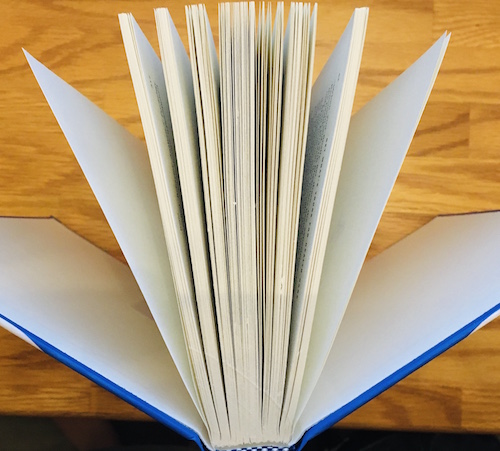
- If it’s mostly the book cover (of a hardcover book) that’s damp, but not the actual text of the book, put some absorbent paper towels between the “boards” of the cover and the pages. Change as necessary (when the paper has absorbed all it can).
- Use fans in the room to circulate air so the book will dry, but don’t point the fans directly at the book.
- If you have a dehumidifier, this is the time to pull it out! Air conditioning is good, too. But none of the air blowing on the book should be so strong as to make the pages flutter.
- Once the book is completely dry, lay it on its back cover, sandwiched between two wooden boards, and place something heavy (like a few bricks or an old-fashioned, massive hardcover dictionary) on top of it, making sure the spine (of the previously damp book) isn’t smushed by the weight. Or, you can use a book press, if you happen to have one of these babies hanging around.
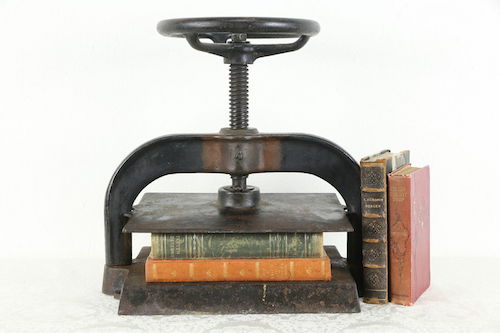
RestorationMaster suggests that for paperbacks (which are usually more slender than hard cover books), you can hang the book on a bit of fishing line or string to help it air dry. (But only do this if the book isn’t soaking wet, or the its own weight could cause the book or its binding to tear.)
If the book is wet, think about the value of your time vs. the value of the book. If it’s a $300 textbook, your willingness to carry on may be different from what it would be if it’s a paperback novel.
- Cover your work surface, as described above.
- Lay the book flat and open it carefully (so as not to rip any of the wet pages) and start interspersing (interleaving, in book restoration talk) paper towels about every 20 pages, working from the front to the middle of the book. Once you get to the middle, flip the book over, and repeat the process from the back to the middle.
- Leave the book flat for about an hour so the paper towels can absorb some of the water. (If your book got that wet, chances are good some of your other stuff got wet. Go check on them.)
- Hour is up? Stand the book up, fanned, on the “head” or “tail” as described in the “damp” section, above.
- Switch out the surface covering and paper towels as they soak up the water, and periodically repeat the process until the book is “only” damp.
- Now follow the directions for damp books, above.
It’s hard to envision some of these steps, so I was delighted to find this video from Syracuse University, where I attended graduate school many, many years ago. Their Department of Preservation and Conservation illustrates how to save damp and wet books from becoming wrinkly, moldy goop.
(For more information, you may also want to peruse the Disaster Recovery Manual for the Syracuse University Libraries.)
If your book is soaked through, meaning it fell into a pool or your house flooded to the point that your book was submerged, this is really a job for professionals. The instructions below describe what they’ll do, not what you should do. Unless you are a restoration specialist, you are likely to be out of your depth. That said, there are two possible measures:
1) Air-Dry (For those of us for whom humidity makes us resemble Art Garfunkel, “air-dry” already has some unfortunate connotations!)
This is basically an advanced version of the solution for “wet” books above, with a few changes:
- DON’T OPEN THE BOOK (to the interior). Don’t fan the pages.
- Put paper towels between the front and rear covers and the interior of the book.
- Use those fans! Turn on the A/C. Get out the dehumidifier. And be patient.
2) Freeze!
WAIT! Stop pulling the Eggos and last night’s leftovers out of the freezer to make room. Freezing books keeps mold and mildew from growing and gives professional restorers some extra time to plot out their attack.
 But to save soaked books, restorers use rapid freezing methods at temperatures down to -20°F (-28.9°C) so ice crystals won’t form on the books. Unless you’ve got a seriously fancy-pants freezer, your Frididaire probably isn’t going to cut it.
But to save soaked books, restorers use rapid freezing methods at temperatures down to -20°F (-28.9°C) so ice crystals won’t form on the books. Unless you’ve got a seriously fancy-pants freezer, your Frididaire probably isn’t going to cut it.
Once the wet books get frozen, restorers use vacuum freeze-drying to remove moisture, similar to how food is freeze-dried.
The water in the damaged book goes from being a solid (picture microscopic ice cubes) to a gas (think: water vapor) without ever turning into liquid.
This is called sublimation. (Is this starting to remind you of high school chemistry class? Or maybe you soaked your high school chemistry textbook and never read anything the rest of the semester?)
By skipping the liquid stage, there’s less of a chance of the paper cockling, the cover (boards) warping, or the ink running. This is good. But again, this is really the work of a professional.
That said, a number of resources, including WikiHow, advise that you can repair a wet book by freezing it in a regular household freezer. (Scroll down on the linked page to see their Method #2.) They advise removing excess water by interleaving small sets of pages with white paper towels, as described above, and then putting the damaged book into a zipper-lock plastic bag, and sealing it. (They warn, “Do not perform a vacuum seal, however; you want some air to be able to reach the book’s pages, and some space to be between the texture of the bag and the book itself.” OK, then!)
WikiHow says to keep the book in the freezer 1-2 weeks, depending on how long the book is. (So, go the full fortnight if it’s all 963 pages of Anna Karenina, which, coincidentally, Paper Doll just finished reading. I wish I could have frozen the chapters on wheat threshing, let me tell you!)
Then, when you pull the book out, you’ll go back to the methods for “damp” and “wet” books above, because you, my friends, do not have a vacuum freeze-drying machine for books. You got a lot of the water out, but as the book defrosts, there will still be moisture!
Anna Gooding-Call of Book Riot notes that the ice crystal problem (obviated by the fancy vacuum freeze-drying used by professionals) is a bigger deal. She notes, “To a certain extent, you might not be able to avoid this because you are a normal human being and you have a normal human being’s freezer. Ice can wreck your book for the same reason as it can wreck your fleshy body: freezing water expands and ruptures things. Set your freezer to its lowest setting—as in, the warmest temperature relative to how freezy it can possibly get—and check frequently. If you have a no-frost function, use it!”
The Houston Chronicle has similar advice about freezing, but notes that if there are any coated pages in a doused book, such as in a section of illustrations or photos, take extra precautions. Because coated pages may fuse together if not separated, their article advises putting a sheet of wax paper between every coated page to isolate each one.
Interleaving, fanning, freezing. This is a lot of work!
For what it’s worth, WikiHow also has instructions for rescuing your damp books using a hair dryer. After removing excess water, they recommend laying the book down on an absorbent towel and aiming the dryer at the pages, top-to-bottom, a few at a time, and not moving onward until the pages you’ve worked on are dry.
I once tried this dryer method, but it still yielded a LOT of cockling, and in the end, I had to reimburse the public library for a new copy anyway. Reader, beware.
Beyond that, my undergraduate alma mater, Cornell University, specifically says NOT to use heat to dry books! Cornell’s exact (final) words on the subject are:
CAUTION
Do not use artificial heat to try to speed the drying, as this will lead to dimensional distortion.
 Undergrowth Doctor Who (MaxPixel)
Undergrowth Doctor Who (MaxPixel)
“Dimensional distortion” sounds like something that’s better handled in Doctor Who than the Paper Doll blog, so we’ll just leave that right there.
RESTORING WET DOCUMENTS
Let’s say you haven’t soaked a book, but perhaps you were working on your family filing and a tiny human or furry friend got over-excited and upturned your glass of water. Most of the solutions for books will work just as well for individual papers.
The Library of Congress has a page of advice for emergency preservation of museum collections of paper, and this guidance is easily applied to your important documents at home:
- Create your safe workspace (away from the tiny humans, furry friends and, your beverages).
- Lay your wet papers flat on clean absorbent towels or unprinted (newsprint) paper. Periodically change the towels as they absorb water, and until your documents are merely damp.
- DON’T try to separate soaking wet sheets of paper. Wet paper is heavy and sticks together; if you try to separate the pages, they are likely to tear. Instead, just leave them in quarter-inch high stacks until most of the water has been absorbed by the towels or has evaporated.
- Once the pages are only damp, you can try gently prying them apart. Then interleave clean, white paper towels between the documents.
- Lightly weigh the documents down to flatten them and discourage cockling.
- Keep the air flowing in the room, but do not blow fans directly onto your papers. Not only would they cockle or ruffle, but they might blow away into the hands of those tiny humans or paws of the furry friends, and then you’ll have bigger problems than soaked papers.
The Library of Congress also advises against air-drying coated (glossy) paper. Instead, freeze the documents immediately using the same (home-based) methods as described for books.
MORE PROFESSIONAL ASSISTANCE AND GUIDANCE
This post should cover your casual book and document restoration needs. If you represent an association, government agency, museum, or other “collection” and need guidance with regard to restoration and conservatorship, try these resources:
American Institute of Conservation (AIC) and Foundation for Advancement in Conservation (FAIC) (including their downloadable documents on caring for books, photographs, and paper)
Canadian Association of Professional Conservators’ Find a Conservator
Canadian Conservation Institute (offers a free emergency telephone line for damage to paper collections)
Northeast Document Conservation Centre (NEDCC)
The National Archives of the United Kingdom, “How To Deal With Wet Documents”
Stay safe! Stay dry! And keep your phone out of the Rice-a-Roni!
Ask Paper Doll: How And Where Can I Donate Lots of Books?

This is the first in a recurring series of Ask Paper Doll posts where you can get your burning organizing questions answered by Paper Doll, a 20-year veteran professional organizer and amateur goofball.

Dear @NomdeB,
These are actually three (excellent) questions! The first, implied, is the bulk of what will address today: where and how can we donate a largesse of books? The second, “Who wants so many?” is partly answered along with the first, but the truth is that if you have a huge book collection (and it appears that you do), you’ll probably be making donations to multiple venues.
But the question at the end of your tweet deserves a bit of attention.
PRINT BOOKS VS. DIGITAL
Do people still want real, tangible books?
And, at the risk of sounding like I’m saying, “Yes, Virginia, there is a Santa Claus,” yes, @nomdeB, people do still want, and read, real books. At the very least, in the United States, even in an era where all-things-digital are the rage, physical books still outsell ebooks. Statistics from 2020 have not fully been reviewed, but in the prior year, the U.S. book industry had $26 billion in revenue; $22.6 billion of that was for print books and only $2.04 billion in digital books. (The rest, one imagines, are in audio books, braille, and rarer, specialized formats.)
[Editor’s note: After publication of this post, results were released showing that print book sales rose 8.2% in 2020, the largest annual increase since 2010!]
It seems the death of the printed book has been greatly exaggerated. There’s some academic research as to why many people (like myself) still prefer tangible books. For example, one study found that print books had the edge over print when it comes to greater reading comprehension and lesser eye fatigue. Further anecdotal evidence indicates that people appreciate the tactile sensation of progress as you get further along in a print book. And I’d be remiss if I didn’t share findings from my alma mater, Cornell University, which has found that “both users and non-users of e-books generally preferred using printed versions of textbooks.” (I hope it’s not just because you can satisfying slam a textbook when you can’t understand what you’re reading!)
People like to read, and people who like to read have a fondness for books they can hold in their hands, show off on the subway, bookmark and annotate easily, and display in their homes to impress their beaus or in their offices to impress their bosses. A book is not just the content of what is written inside, but what it allows one to feel upon seeing the cover, and what we hope it says about ourselves. Books, like people, are complicated.
With that concern dispensed of, let’s move on to what to do when you’re simply ready to let go of the excess – the books you’ve already read and won’t read again, the books you’ve outgrown, and the books you never read, either because they were ill-fitting gifts or you acquired them for aspirational rather than practical purposes and you’re finally, finally giving up trying to read them. (Hello, Moby Dick?)
YOUR BOOKS
@nomdeB, you’re not kidding about having a ton of books.
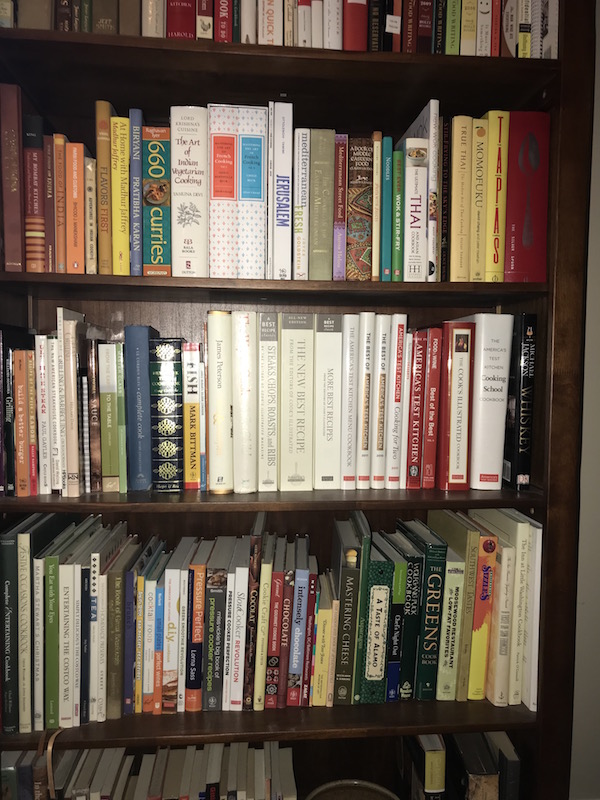
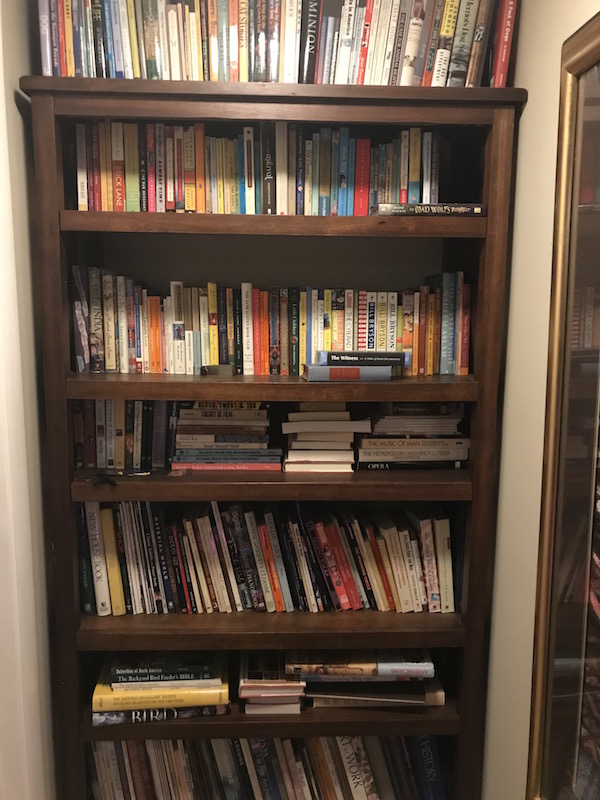
From the photos you showed me, you do, indeed, have a wide variety of books, both on bookshelves and in boxes, and they are almost all perfectly categorized into genres. (Though I do wonder how Hemingway and Thomas Hardy got blended with Geological Hazards.)
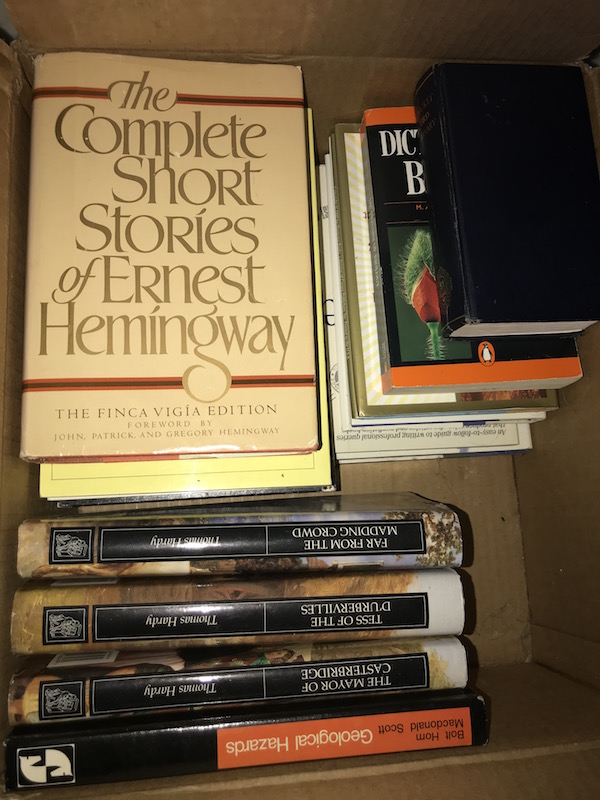
From Harry Potter to Mario Puzo, from 660 Curries to Puppies for Dummies, from C.S. Lewis to a Hindi-English/English-Hindi dictionary, you could open up your own bookstore or lending library. (Though I’d be glad to take that Short Walks in English Towns off your hands.)
DONATE YOUR BOOK TO CHARITIES
We’ll begin with a bevy of traditional charities that accept donations of books. As you’ll see further along, this is not the only option, but it’s where most people start. You probably already have some favorite charities, like Goodwill or Vietnam Veterans of America, but if you’d like to look further afield, consider the following.
Donate Books to Members of the Military — Did you know that the surge in popularity of paperback books actually began in World War II, with the creation of publishing arms dedicated to printing smaller, lighter books? (It helps that the proliferation of book-burning by the enemy helped make the reading of books an almost patriotic activity!) If you’d like to read more about this era, Molly Guptill Manning’s When Books Went to War: The Stories That Helped Us Win World War II offers great insight.
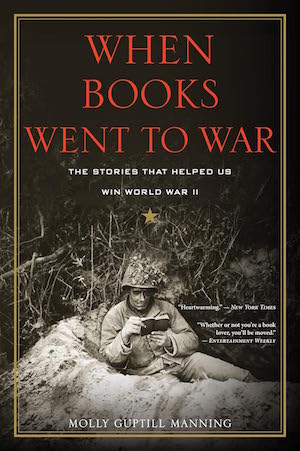
Yes, I digress, but it’s my column and I can meander if I want to! The point is that donating books to our soldiers, sailors, airmen, Marines, Coast Guardsmen, and Guardians is a worthwhile endeavor. Consider these options:
Books for Soldiers – With the motto “Care Packages for the Mind,” Books for Soldiers lets any deployed member of the military request a book (or DVD, or video game). Donors can view book requests, and you send books directly to the troops rather than to a central repository.
Operation Paperback – Through a network of volunteer shippers (that is, donors) around the country, this non-profit lets you input the genres you have and OP’s system will generate a customized address list to which to send books. Operation Paperback also provides books to wounded warrior programs and veterans hospitals in the U.S., as well as USO centers at US Airport transit points.
Donate Books to Prisoners – Education is a key to rehabilitation, which is essential for inhibiting recidivism. In recent years, many prisons have curtailed the ability of prisoners to accept books. During COVID, many prisons are in lockdown, leaving few opportunities for human interaction. Most prisons do not not allow friends or family members to send books directly to prisoners, so only bookstores, online stores, publishers, and donation programs can get books into the hands of prisoners. Each organization has a list of requested genres and items they cannot accept. Please read them carefully, and note that in all cases, dictionaries are highly desirable.
Prison Book Program – In addition to general reading for entertainment, escape (no pun intended) and self-education, they have special programs for disseminating GED study guides, legal books, and dictionaries. Prisoners write essays and reviews of the books they’ve read. Due to COVID, they are not currently taking donations by mail and limiting in-person donations. Please keep an eye on their donation information page as we (hopefully) exit the pandemic.
DC Books to Prisons – This organization accepts English- and Spanish-language paperbacks. Due to COVID, they aren’t currently accepting donations at their usual location, but their volunteers are meeting donors by appointment. The link I’ve provided indicates the genres and titles (both fiction and non-fiction) most desired.
Books Through Bars – This group sends books to prisoners via their offices in New York City, Philadelphia, and Boston.
SATURDAY AND SUNDAY—> Mass-Market paperback drive!
We are in need of the following mass-market paperback fiction*:
* Mystery/Detective (e.g. Sue Grafton, Barbara Neely, Lee Child)
* Thrillers/Action (e.g. P.D. James, James Patterson, Patricia
Cornwell, Clive Cussler) pic.twitter.com/xBWpUasUi5— NYC Books Through Bars (@BtBsNYC) January 16, 2021
Books to Prisoners – This Seattle-based nonprofit mails free books to incarcerated person across the U.S. Operations are currently closed due to COVID, but please keep this option bookmarked for future consideration.
Inside Books Project – This group sends more than 35,000 books to incarcerated Texans each year.
Women’s Book Project – Mail books or donate locally in Minneapolis.
Donate Books to the Wider World – Both at home and abroad, books are heartily desired to build collections in libraries and schools and to be sold so profits can support literacy programs. (The following primarily seek adult books; a future post will cover donations of children’s titles, as the requirements tend to be complex and geographically-specific.)
Better World Books – Simply box up your books, print a shipping label (the cost of which is covered by BWB) and ship to their facilities in Indiana. The books will either be resold to raise money for literacy charities or donated to a child in need, as appropriate. They also have drop boxes in a variety of cities; just enter your community in the search map. (You can also buy used books from their site to help them raise money for their literacy causes.)
Books for Africa – This group seeks paperbacks and hardcovers published in the past 15 years, textbooks, and reference books (including medical and IT/computer books) from the last ten years. Over the past 23 years, they’ve shipped millions of books to children and adults in 46 countries. Donation dropoffs are available in Atlanta, GA and St. Paul, MN. See their requirements.
Open World Books – This Chicago-based 501(c)3 nonprofit accepts donations at their headquarters and at donation drop-boxes around the city, allowing for 24/7 contactless donation. They operate a used bookstore, the proceeds for which fund literacy programs for children and young adults.
Books 4 Cause – Book donations to the Chicago-based Books 4 Cause have helped create 118 libraries in Africa, recirculated hundreds of thousands of books, and saved even more from landfills. Their campus book drives have collected textbooks for developing libraries and supported educational programs in Africa. In addition, donated books for children and adults have been distributed to people in need in Chicago and worldwide. Donations are accepted in Chicago and New York City.
And remember, if you don’t want to even leave your house, Give Back Box is an easy option for getting books donated and on their way with minimal effort and at no cost to you.
DONATE IN YOUR COMMUNITY
While the above non-profits are meaningful, many donors prefer to give their books new lives in the communities where they live. The following donation solutions will differ from community to community and venue to venue. Take an extra few minutes to check out the venues and make calls to each to see what the genre requirements and preferences are, and what, if any, special donation rules exist during COVID.
Retirement homes – If you’ve ever visited a friend or relative in a retirement community or assisted living center, you may have noticed how anemic the “library,” if there is one, seems. A mere smattering of bound Reader’s Digest Condensed Books is heartbreaking to an eager reader. While large print books may be the most appealing for some, lifelong readers love to read and will welcome a wide variety of genres.
Think “old folks” just want classics or naval war histories? Get real. Remember, folks born 90 years ago were just in their 30s in the swinging 60s. My 96-year-old friend watches Grey’s Anatomy and keeps up with the same shows I do. Age is no barrier to reading tastes. If you like a book, someone twice (or even thrice) your age may like it, too!
Age is no barrier to reading tastes. If you like a book, someone twice (or even thrice) your age may like it, too! Share on XHospitals, especially children’s hospitals and veterans’ hospitals – During COVID, patients can’t have their loved ones with them. Many hospitals have terrible Wi-Fi and books offer a rare comfort. And even in “normal” times (remember those?), patients and parents of children often seek something to occupy their minds and time. Call the volunteer director of your local hospital(s) and ask if they have a patient/family lending library and if they are accepting donations.
Ronald McDonald Houses – Across the country, Ronald McDonald Houses offer home-away-from-home respites to families of sick children so they can live close to the hospital during treatment. Not all RM Houses accept used books, though, so call your local RMHC chapter or program house and ask whether they have a library to which you can donate. If you’ve got a TON of books, as @NomdeB has, you might be able to help them create an entire library from scratch!
Homeless shelters – Unhoused people lose so much of the dignity of their former lives; a home is not merely a place in which to live, but it’s a space in which to seek refuge. Books are a place in which to seek mental and emotional refuge. While space is likely to be limited at homeless shelters, it’s worth calling to ask if they have a library area in the building and if they are able and willing to accept donations. (If it’s within your power, you might also want to donate bookshelves.)
Domestic violence shelters – The strength it takes to escape a violent household and build a new life for yourself (and possibly your children) is immense. Emotional reserves of strength can be fortified by education, entertainment, and motivation – all attributes to be found in books. As above, call to see if donations are accepted.
Local professional, community, and high school theaters – When you go to the theater, you probably pay the most attention to the actors, but good sets create an ambiance. Check with your local theaters to see if they would like donations of books, particularly hardcovers to line the shelves of sets for spaces like attorney’s offices or fancy-pants rich people’s home libraries.
Libraries – Although libraries have limited budgets, many public library systems have rules regarding what they can accept for circulation. However, if your community has a Friends of the Library organization, it’s likely that there’s some sort of annual library book sale to which your books can be donated.
Additionally, the American Library Association helps American and international libraries after natural disasters. In general, financial aid is sought, but there are often needs for books, particularly children’s books, when library collections are destroyed. Your library may post requests on your branch web site, so it’s great to get in the habit of visiting your public library’s site to keep abreast of such needs. Also, check out the ever-changing tabs at the ALA’s Book Donation Programs site.
School libraries and academic departments – While public libraries may not be allowed to expand their collections with donations, many public schools, particularly in disadvantaged communities, might find your books a boon. If the middle or high school has a home economics department (do schools still teach Home Ec?), those cookbooks of yours could be a delight!
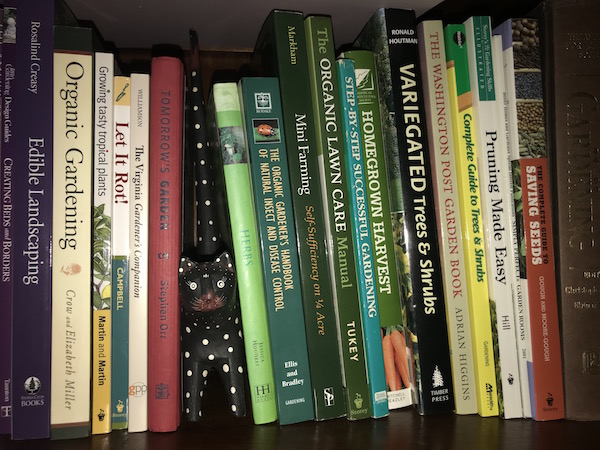
Homeowners Association Clubhouses and Community Centers – @nomdeB, all those gardening books would be a boon to people in a starter home who have never had their own garden. A quick call to an HOA or community center (sometimes found in houses of worship in smaller communities) could find a great home for your how-to and DIY books!
BUILD YOUR OWN LENDING LIBRARY
One of the greatest book-related charms over the past decade has been the growth of the Little Free Library movement. Their website provides all the information you need to start your own lending library program from right outside your own home. Build your library, register it, and trust that the right people will find their perfect reads.
@nomdeB, thank you for asking the first Ask Paper Doll question, and I hope this helps you find homes for your gorgeous collection of books.
Readers, if you have a favorite option for donating books, I encourage you to share in the comments. And, as always, feel free to reach out through social media or my site’s Contact page to contribute your own Ask Paper Doll question.
Paper Doll Peeks Behind the Curtain with Superstar Coach, Author & Speaker Leslie Josel
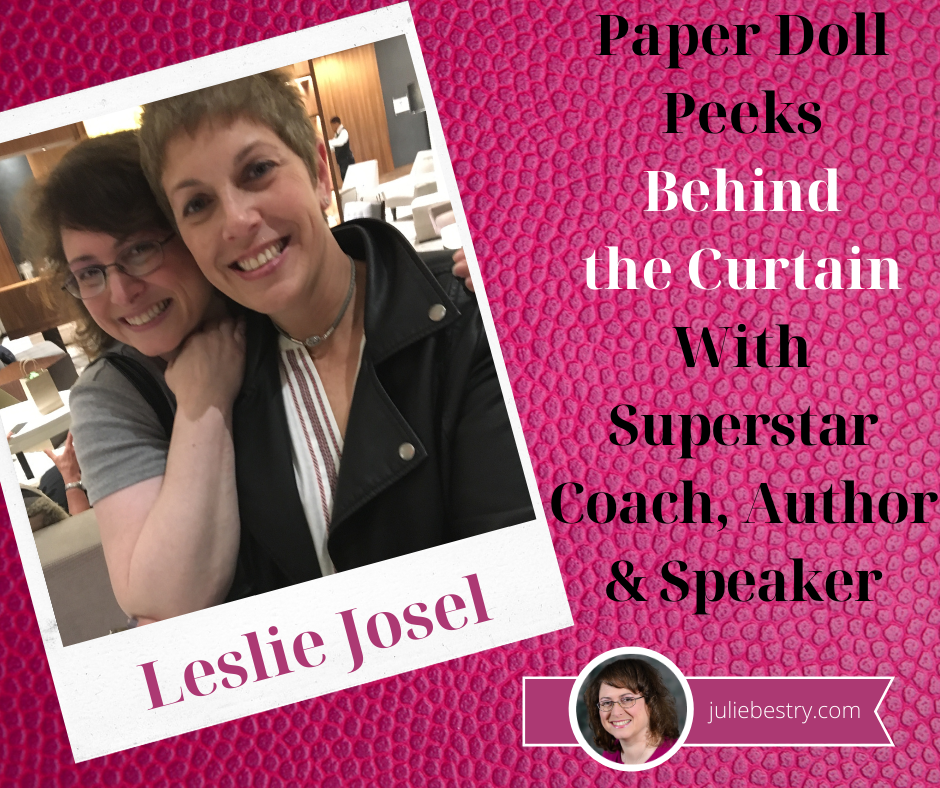
Today, we’re talking with friend of the blog, Leslie Josel. You may already know Leslie from her business, Order Out of Chaos, and her various adventures in productivity. Her newest book was released this month. In this post, we’re going to peek behind the curtain on this multi-talented expert on ADHD, student procrastination, and getting everyone around to her to sit up and take notice of what she has to say.
Leslie, we met almost a decade ago at a NAPO conference, but we almost met at college. You and I missed each other at Cornell University by just a few months in the 1980s, the decade of big hair and oversized Firenza sweaters. Could you tell Paper Doll readers about your early life, college years, and the start of your professional life? How did they prepare you for a career as a professional organizer and ADHD productivity coach, as well as inventor, speaker, and published author?

I so wish we had met met at Cornell! That would have been fun. To save your readers from a long story, I’ll share this. I was a Human Development & Family Studies major. And not until I started my business did I pull all that old learning out of my brain. Trust me, it had laid dormant for many years. And I really believe it’s why I focused my business initially on the chronically disorganized, hoarding population, and of course, ADHD families.
For me, I was less about organizing and more about the human dynamics of it all. And if I’m being completely honest, I never really liked “organizing” and if I’m being really honest, I wasn’t that good at it. I was much better at helping individuals understand the root of their pain and things like that. Which in hindsight makes sense of why I stopped “organizing” years ago and went the way of coaching. And when I was a sophomore, I was required to take a public speaking class. It was like the mother ship calling me home. I LOVED it! I liked engaging on that level. And I guess I was pretty good at it since the professor asked me to TA the class the following semester.
And one other fun fact. My mom died when I was very young — ok, that’s not the fun fact. But my dad really raised me as a single dad. And he used to say to me ALL the time, “If you can write and you can speak in front of a group of people, then you can do anything.” Probably that was more true back then, but it definitely focused me. I always wrote in every job I ever had, now that I think about it. I was a speech writer for the head of an entertainment company. I was a publicist right out of school and I was ALWAYS the one given the writing assignments. It was just a natural outlet for me.
What would you say was the turning point that helped you identify your true calling and fine-tune what you do?
So, organizing is not really my true calling. But it helped me get to where I am today. Organizing was a way to have calm in a life growing up that was anything but. My mom was terminally ill my whole life so things in my life and home were out of control. Systems and lists spoke to me. It was always what did best. Give me the big project and I loved it. Keeping on top of all the moving parts was like a big puzzle for me.
But it wasn’t until my son was 5 that my true calling was presented. He was diagnosed with ADHD, and you need to remember there wasn’t anything out there like there is now. There was no “internet,” no magazines or conferences, things like that. I had to rely on my own instincts and gut to figure out how to untangle his world.
You can read my whole story on my site, but I redid my whole house top to bottom so he could function and thrive at his best. A friend saw what I did, sent me to a patient of hers, and two weeks later I got four calls asking me to come do what I did in their homes. I turned to my hubby and said, I don’t do this for a living and he said, “You do now!” And that’s how I got started. Going house to house by myself working with families to set up systems and structures to help their children with ADHD. Remember, organizing wasn’t a whole thing yet — this was 2004 — and organizing ADHD even less so.
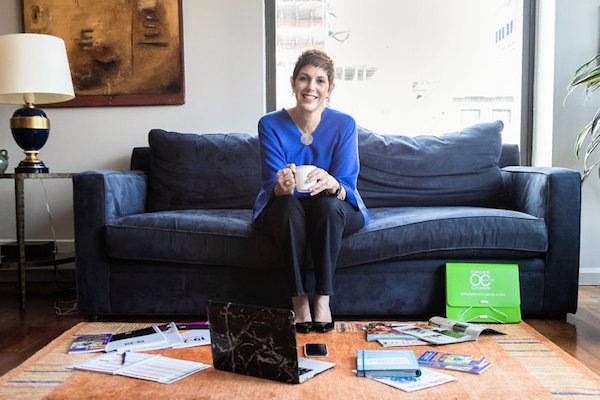
© 2020 Order Out of Chaos
Now 17 years later, I’m an academic/life coach for teens and college students with ADHD and LD [learning disabilities]. And my son is 22. So you might say Order Out Out of Chaos and Eli have grown up together. But becoming a coach for both kids and parents was the missing piece to my “journey.” It allowed me to make my business virtual, serve a global audience with a wide range of products and programs, and connect with those that need the most help.
So if I were to say what the turning point was for me — it would be two things. Becoming a coach and turning my business into a virtual one. Life changing.
Until recently, you were probably best-known for inventing the multi-award-winning Academic Planner: A Tool for Time Management. Congratulations on winning the 2020 Family Choice Award, honoring the best products for children and families, by the way. How did your stardom as an inventor come to fruition?
Seriously, Julie? There is no stardom when it comes to inventing planners! Trust me when I say I don’t have a superpower when it comes to this. In fact, fun fact #2, I’m actually very conservative when it comes to my business. So inventing the planner was born out of a frustration and a need. And I think most of you can understand that. How many times have you said, “I wish there was a…” to solve whatever problem you had?
Leslie Josel tells Paper Doll, 'There is nothing sexy about inventing a planner!' Share on XSo there is nothing sexy about inventing a planner! I couldn’t find what I needed to teach kids “how” to see their time. And that’s a biggie when working with kids. So I ordered every planner that was on the market back then and put them all in my basement! I should have taken a picture! And the sad thing was they were all pretty sh***y when it came to giving students what they needed. So I started cutting from one, pasting to another. You get the drift. Then I had my assistant at the time (who had a graphic design background) make a prototype, then ran some off at the local copy shop and gave them to my local clients. And friends started calling…and then friends of friends. So I went back, made some tweaks and made some more. And it kept going!
The one very smart thing I did at the very beginning — OK, here’s Fun Fact #3 — is send them to everyone who was in my NAPO Student SIG [Special Interest Group] to get their feedback and to offer them free copies if they wanted them. That was huge. The reaction was extremely positive. And that’s when I realized I was on to something. So I got smart. And that means to know you know NOTHING about bringing a product to market, pricing it, etc. So I hired someone to help me firm up some of that stuff, get it patented it, price it. The rest I figured out on my own. And seven years later we sell over 100,000 planners all over the world to schools, students and stores.
What is really depressing about all this is nothing has really changed in the academic planner market. The category is still pretty sh***y when it comes to companies focusing on what a student truly needs. Slapping a new cover on an old style does not make a new planner intuitive to students. We say about ours: No Filler. No Fluff. No word of the day. A planner that does what it says it does. Plan Time.
And I’m REALLY proud of that, since I came up with it! OK. Time for FUN FACT #4. The use of planners, paper products and academic ones rises each year approximately 10 to 15%. And the biggest group that uses planners? College students!
A few answers to questions I always get asked:
- NO to an app!
- NO to an adult planner! (Lots of adults use our small size since it is really customized.)
- Yes, I’ve been approached by a major company to sell, but the deal fell through.
- And yes, another company tried to rip my design off. We sued and won! Being married to an attorney has its benefits! 🙂
But all kidding aside, the biggest OMG moment for me was the first year we hired a fulfillment service to pack and mail. The first two years, we packed planners in our basement. And at the end of that second year, my family held an intervention. Seeing pallets after pallets being moved into a warehouse for filling orders was the most “Are You Freakin’ Kidding Me?” moment. I was exhilarated and nauseous all at the same time.
Your new book, How To Do It Now…Because It’s Not Going Away is not your first rodeo in publishing. You’re the author of What’s the Deal with Teens and Time Management?, and before that, you partnered with Susan Weiner on The Complete Diabetes Organizer. How did you come to write How To Do It Now…Because It’s Not Going Away, and was there anything different about this writing or publishing experience from what you’ve had before?
So you know that how this came to be was all you! And I will forever be grateful for your generosity. Fun Fact #??? Julie introduced me to my book developer. [Editor’s note: I’m blushing. But it was obvious from the first conversation with that publisher that Leslie was the ideal writer for the project.]
So here’s the Reader’s Digest version of the story. The last book I had written was in 2015 and it was geared to parents. I liked that book, but to be very honest I didn’t love it. I was held to a certain number of pages, format, etc. In 2018, I knew it was really time to write another book and the book I so wanted to write was for students. I spend all day every day with them. I know this population really well. I wanted to cut out the middle man, which in this case would be their parents, and talk directly to them. To represent them respectfully. To let them know that someone was truly listening and understood. To speak to them the way they would want to be spoken to. So this whole writing experience was super different from what I was used to.
My last book was geared to parents. My Dear ADHD Family Coach columns are geared to parents. Even the articles I wrote for Family Circle were geared to parents. Being able to write for students was very freeing. I knew I had to speak their language. I knew I had to bring in all my student stories so anyone reading the book could identify. I knew it had to be real. NOT judgmental. And funny! So in some ways, this book was super easy to write. The greatest compliment I get after someone who knows me reads this book is that they feel like I am speaking directly at them.
And working with a publisher that knew the YA [Young Adult] space really well was beyond a dream. They let me do my “thing.” They didn’t edit my natural voice. They let me get creative with the chapter titles, the classroom confessionals, and all the funny stuff in the book. In other words, they trusted me. And in turn I trusted them.
The writing experience is different for every author. In the lingo of NaNoWriMo, there are plotters (people who outline) and pantsers (those who write by the seat of their pants). What are you? Do you think you apply the anti-procrastination advice you give in the book to how you actually wrote the book?
I had no choice but to be an outliner. My publisher demanded it. And that was hugely helpful. It helped me craft the narrative and be very deliberate in my writing. So—and sit down for this one—I only had two months to write the book and during THE busiest season of my business. I wrote the time management chapter over Memorial Day weekend of 2019. I was given notes and approval to keep going two days later with a deadline for my first draft for August 1st. NO ONE should ever write a book like that.
I wrote the book out of order, literally. Made deadlines for myself along the way. But it wasn’t just the chapters I had to write. I had to have all the apps, all the resources, all the student stories, all the classroom confessionals, everything. It was insane. I hired my son to manage the classroom confessional portion. He wrote up 20 interview questions, reached out to all my students on my behalf, followed up with everyone to get all the answers back, and then picked the best answers for the book. My daughter helped by taking every app and every resource I wanted to include to make sure they were current, etc. My husband proofread every chapter, giving me edits and notes when something didn’t make sense or needed more context. I would never have gotten through by the deadline if I hadn’t had their help. I did not involve my Order Out of Chaos team, since we were also in the middle of back-to-school season and they had to literally hold down the fort. Procrastinate? Not on this! Who had the time?!!
But I will say that I let myself use the advice I give to my students. I wrote the book completely out of order. Meaning, I wrote chapter 2, then 7, then 4, then 8. That type of thing. And I wrote the first chapter last. This helped me stay unstuck.
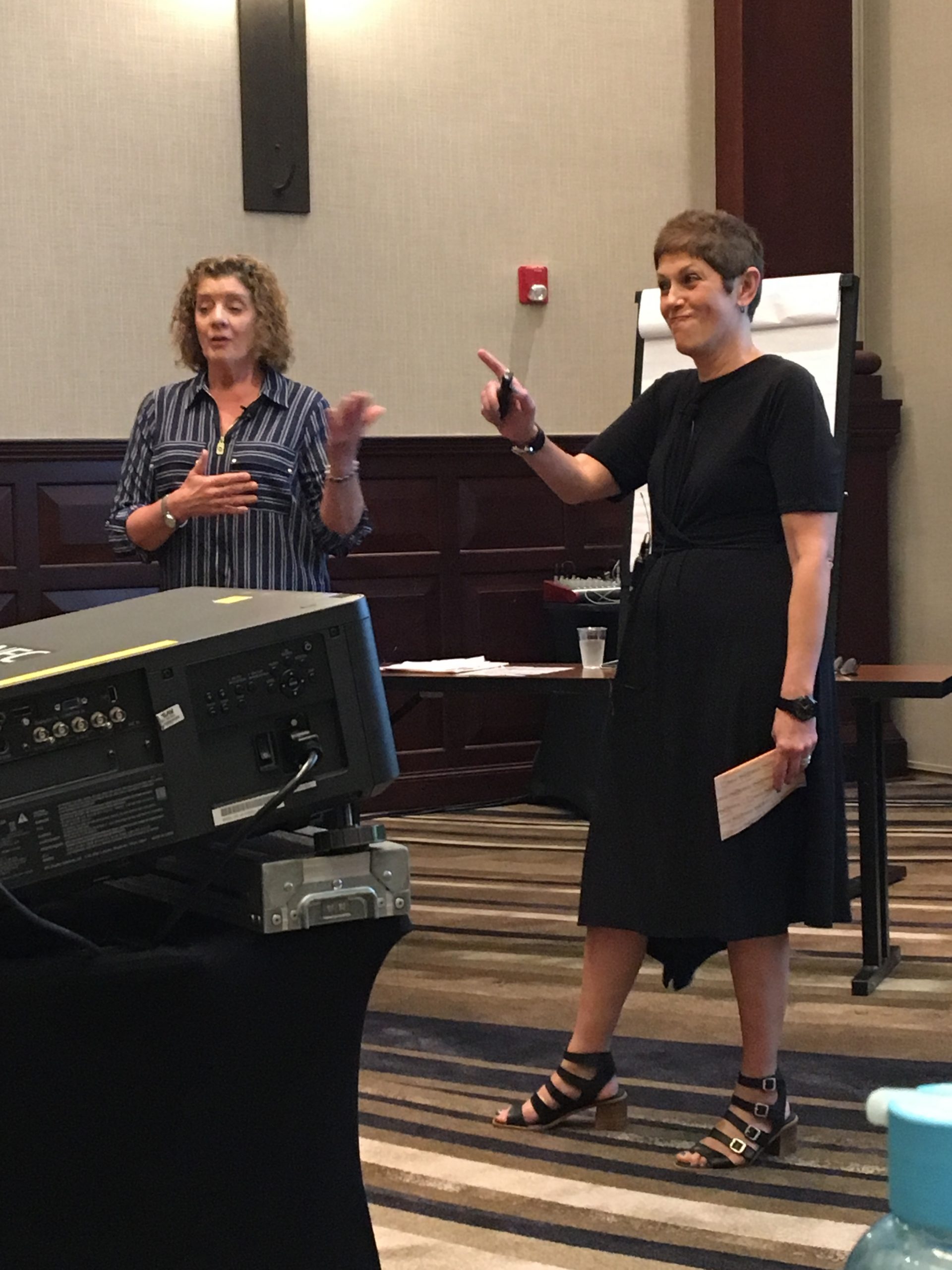
In your column Dear ADHD Family Coach for Attitude Magazine and in your previous longtime gig as a contributing parenting writer for Family Circle Magazine, you wrote for adults. In How To Do It Now…Because It’s Not Going Away, you’re talking to teens and college-age young adults. Which do you find easier? Why?
I think I answered this in the question above. But I will say this. Kids can smell bullsh*t. So you have to balance being overly nice and supportive with being fair but calling them out on their bullsh*t. And I think that is my super power after all these years.
What have readers been telling you is their favorite advice or anecdote from the book? What is YOUR favorite part of the book?
On a macro level, what’s resonating with people are the student stories. Everything from the student who works under the kitchen table to the college student who writes his assignments on paper towels. Parents are identifying with these stories as they are seeing their own kids in them and students are seeing themselves in these scenarios, too. How can you make up a story about a kid who writes on paper towels! Seriously?
Leslie Josel tells Paper Doll, 'You can procrastinate and that doesn’t make you a procrastinator.' Share on X
On a micro level, it’s the concept that you can procrastinate and that doesn’t make you a procrastinator. So to get serious for a minute, most of these kids have been told horrible things about themselves or they think them on their own. They have been told they’re lazy or stupid or worthless. And right at the beginning of the book, I address this and squash this. Huge reaction to that.
And my favorite part of the book? God, Julie that’s like picking my favorite child. I would say the personal stuff — like Eli and Maddie’s own stories, and especially Eli’s quote right at the beginning. It sets up the whole book just like that. [Author’s Note: Eli’s quote is at the beginning of the introduction. You’ll have to read the book to hear what Eli has to say, but it’s a doozy of a change in mindset!]
Leslie, you’re a Renaissance woman—you work with clients, write, do public speaking and webinars—but when you aren’t busy being Leslie the Expert, what’s going on in your life?
My business takes an enormous amount of my time. So if you had asked me this question back in February, I would have said travel. My husband and I have a lot of wanderlust in us. We both travel a lot for our respective businesses and then on our own, with friends and with our adult children whenever we can. We are very fortunate that we can do what we do to some degree no matter where we are. Remind me to tell you the story of when I gave a webinar sitting on the bathroom floor in my hotel in Dublin. [Author’s Note: Please let us know in the comments if that’s a story you need to hear!] I wouldn’t have it any other way.
So, traveling was all consuming until March. It is seriously a hobby and a passion. Before the pandemic hit, if I was “home,” you would find me at a concert or broadway show. (My hubby is in the music business.) The perks of living outside of NYC. Two adult children that like hanging with their parents and I wouldn’t have it any other way. A hubby who I not only love but really really like. He’s my true partner in every way. And a posse of girl friends who are always up for a walk, yoga class, a cocktail, frozen yogurt, or a GNO. And if I need a true escape I swim, read entertainment magazines, and watch some fun television.
To get a sneak peak of the first chapter of How to Do It Now…Because It’s Not Going Away, access Leslie’s Spotify study playlists, and read reviews of the new book (available on Amazon and Leslie’s site), visit the book page at Order Out of Chaos. You can also find Leslie on YouTube, Facebook, Pinterest, and Instagram. And you can read my review of the book on Amazon, Goodreads, and the Book Resources page here on my site.
Affiliate Disclaimer: This site uses affiliate programs to help generate a supporting income which allows us to continue our work and provide you with the best overall experience and valued information. If you have any concerns, we suggest you do not click on any affiliate links found throughout the website or blog. If you are uncertain as to the resulting link’s destination, you may hover your cursor over the linked material to see where it goes. We will always provide you with a company or agency name, which you can type into any search engine in order to reach the site independently of our links. For more information, please see the Affiliate Tracking section of this site’s Privacy Policy linked at the bottom of each page.
How To Make Your Reading Time More Productive With Book Summaries
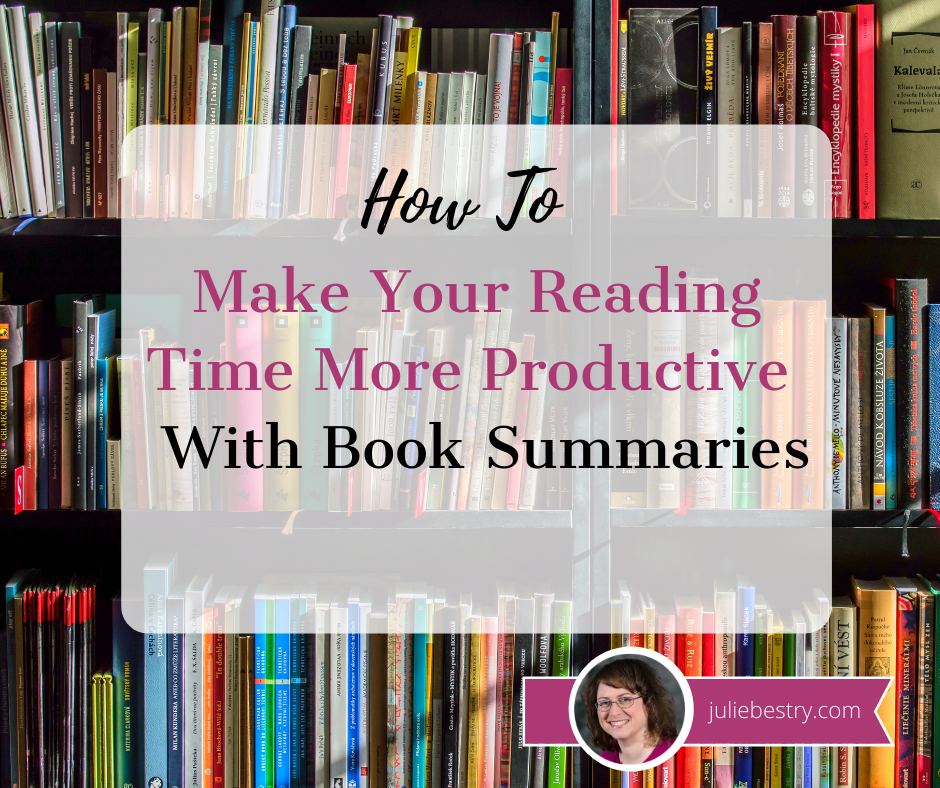
Over the last few weeks, we took a deep dive into squeezing more reading into your life. In 12 Ways to Organize Your Life to Read More – Part 1, we looked at creating space and time for reading, creating better habits, and making reading a communal experience. In 12 Ways to Organize Your Life to Read More – Part 2, we delved into developing reading lists, changing formats, tracking reading habits, and motivating yourself with challenges. We also touched on sampling books.
One problem my clients often report is difficulty reading the right books. There are so many titles on a topic they need, usually for work, that they never quite get to – or through – many of them.
Today, we’ll look at services offering summaries of important, recommended, and/or best-selling books that your colleagues (and bosses in the C-suite) may be discussing. You want these people to feel like you’re on the cutting edge. However, (especially during the pandemic, when you’re not only a worker-bee but perhaps also an in-house substitute teacher), it’s hard to make time to read all those buzzy-wordy tomes.
So, consider these options CliffsNotes for non-fiction books. These services give you the birds’ eye view of what they feel are the author’s most important points in any book. If the author’s style resonates with you, continue on to read the actual book. If not, you’re a jump ahead of the person who has only half-read a few reviews.
Book Summary Services

Read It For Me – What do you think of the idea of being presented with the “Best of a Book in 12 minutes?” That’s Read It For Me’s theory, that in under a dozen minutes, each audio or video summary can share the biggest ideas from the best books on sales, marketing, leadership, and personal development.
For over a decade, founder Steve Cunningham and his team at Read It For Me have worked with the leadership development programs at companies like Mailchimp, Zappos, Bank of Montreal, AstroZeneca, and Spotify to develop and tailor educational content, the basis for the Read It For Me summaries.
Each week, there’s one “featured” sample book summary video, available at no cost. Visit Read It For Me’s main page and scroll down until you see the friendly lady holding the popcorn and beverage, and click. The first few minutes introduce the platform, and then you can watch the video summary.
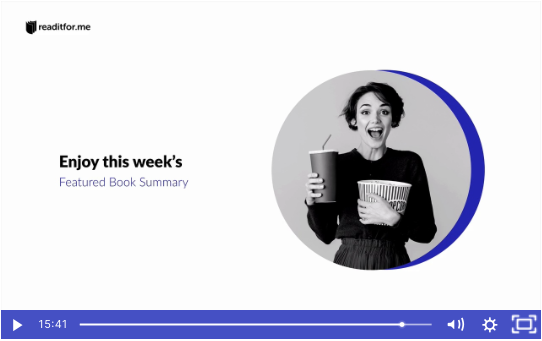
For each book summary in the Pro (paid) version, Read It For Me creates both an audio and a video summary (with an accompanying transcript). Just toggle “Listen” or “Watch,” depending on your preference, and with either version, you can read along with the transcript. (Note: the video does not have closed captioning; if you require it, you can open the summary page in a separate window and read while watching the video, side-by-side.)
Once you’ve completed a summary, you can mark it as read to help track your progress. Clicking a little heart icon works just as you’d expect to let you know that it was one of your faves.
Inside your book summary library, you can view all books, or sort by those that are most popular, the ones that you’ve already read, the ones you’ve marked as favorites, or by specific categories, which Read It For Me keeps fairly broad:
- Human Capital
- Innovation/Trends
- Entrepreneurship
- Personal Development
- Marketing
- Sales
- Leadership
Monthly pricing for Read It For Me Pro is $10, with no contract and a free first week. An annual contract is $110, payable in one lump sum. (Keep your eye on the site, as they often offer great discounts on lifetime memberships.) The app is available for iOS and Android, but the site is also well-formatted to access in your browser.
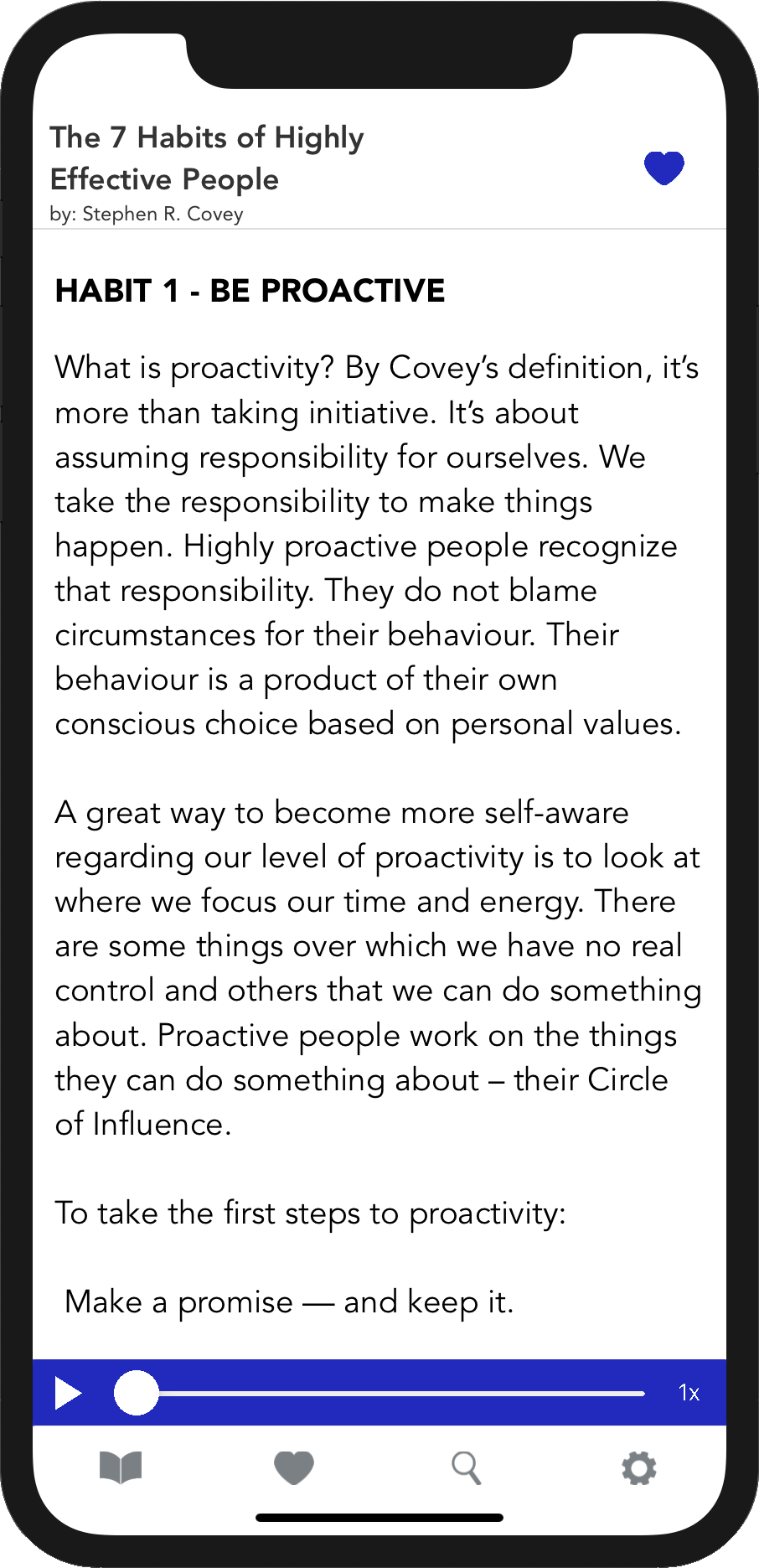
I’ve been a subscriber for about six months, and find the Read It For Me videos make a great (and educational) mental palate cleanser when transitioning between projects, especially in the late afternoon.
I use the summaries both to get a clearer picture of books that I’m not likely to read in full (generally on sales) as well as to get a sense of which books on similar topics would be the best fit for my reading and learning style (like Difficult Conversations: How To Discuss What Matters Most by Douglas Stone vs. Crucial Conversations: Tools for Talking When Stakes Are High by Kerry Patterson and Joseph Grenny vs. Fierce Conversations: Achieving Success at Work and Life, One Conversation at a Time by Susan Scott).
So far, my favorite summaries have been for Ryan Holiday’s The Daily Stoic and Brené Brown’s Daring Greatly.
A few final notes: all of the audios and videos are narrated by the founder, Steve Cunningham, so if you listen often, that can get a little repetitive. (But he’s got a conversational style of summarizing and a fun Canadian accent.)
Also, and of greater concern, the majority of titles are by white men, meaning that there’s a paucity of diversity of thought leaders, in terms of gender, race, and ethnicity. While this is attributable to which authors make it to the best-seller list, and this is common across all of the platforms discussed below, it’s worth noting at the outset.
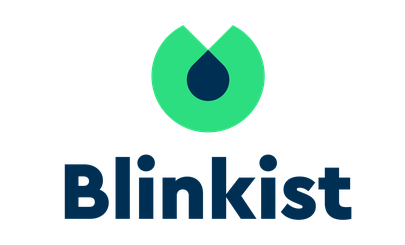
Blinkist – Based in Germany, the app’s editorial team pulls the key ideas and insights from 3500+ bestselling non-fiction books and transforms them into 15-minute (or shorter) read-or-listen offerings, called “blinks.” Created in 2012, it’s one of the oldest subscription-based book summarizing services and has more than seven million users.
Blinkist offers 27 different reading categories, ranging from productivity and personal development to entrepreneurship and corporate culture, to marketing and economics, and has created a wide variety of intriguing booklists. Not all of Blinkist’s categories are business-oriented, as philosophy, religion, science, politics, history, and more also get the summarizing treatment.
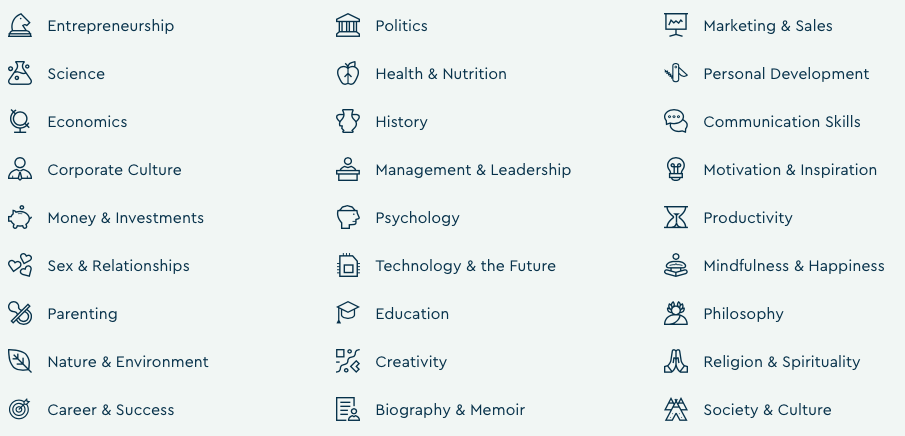
You can view recently-added titles (Laura Vanderkam’s The New Corner Office caught my eye) as well the community’s most popular titles. Every Blinkist summary is created in two versions, so you can read or listen. Personally, I process what I learn much better if I can read it, but some people might prefer to listen first, then read to get the full experience.
In addition to key takeaways and insights, the Blinkist app features curated book lists to help you select the best titles in specific categories. It also suggests new titles based on your reading history, presents new and trending titles, and makes it easy to discover your next preferred summary (or actual book to read). In addition to the app, Blinkist has a podcast, as well as a digital magazine with some compelling content like:
Becoming More Productive Isn’t a Goal, It’s a Habit
Why Are So Many People Struggling With Loneliness
Dare to Read: 8 Non-fiction Books Recommended by Brené Brown
Blinkist has a 7-day free trial, which gives you access to all of the summaries. After that, you can choose the Basic plan, at no cost. This grants you access to one Free Daily Read, but it’s selected by Blinkist, so you’re at the mercy of what they select for everyone. (On the plus side, you and a friend could discuss each daily title, augmenting what you get out of the experience separately.) The Basic “blinks” are read-only.
Alternatively, there are two pricing options for the Premium plan, either $15.99/month or $99.99 billed annually (for $8.34 month). The Premium plan includes the following features:
- Unlimited access to every title
- Audio summaries
- Offline library access
- Highlight the portions of the text summaries
- Forward your highlights to Evernote
- Send your text summaries to Kindle
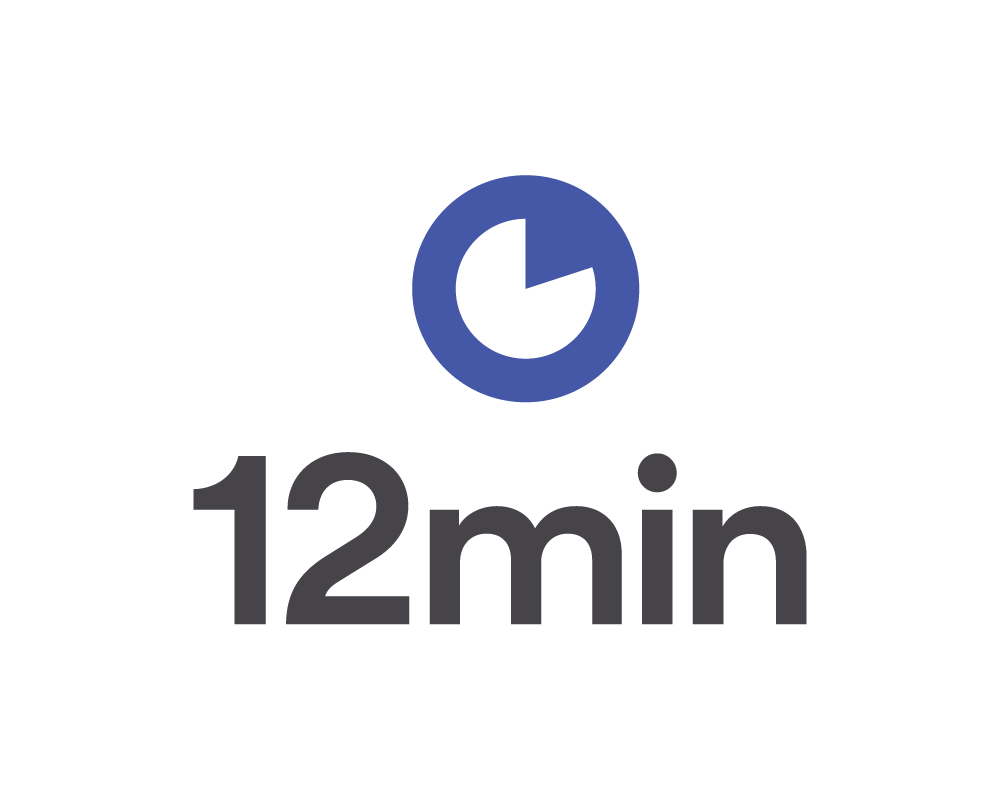
12 Min – Short for 12 Minutes (because who has time to read the whole word?), 12 Min is similar to Read It For Me and Blinkist. They offer a tiny bit more about their editorial process, noting that the team members “[r]ead the books several times, highlighting and writing down everything, searching for key ideas. Our team meets, discusses and summarizes the most important concepts and ideas” and creates what they call a “synthesized, optimized…microbook” available for consumption in under 12 minutes.
The platform covers thirty non-fiction categories, from standard business fare (like corporate culture and communications, management and leadership, and marketing and sales) to self-help (like health and diet, investment and finance, sex and relationships, and productivity and time management). 12 Min also offers summaries of children’s books, biographies, and memoirs. Search by category, author, or title. The website itself is available in English, Spanish, and Portuguese, and appears to be a Portuguese company.
Each 12Min “microbook” can be read as text or listened to as an audio in the app, and as with podcasts, you can adjust the speed, rewind ten seconds, or fast-forward thirty seconds.
Subscribers can create a new account with Facebook credentials or by creating an email/password combination, and 12 Min is available for iOS and Android. Compared to other platforms, the free trial period is pretty short at only three days, and, frustratingly, the website is not-at-all transparent regarding subscription costs. The iOS description indicates that subscription plans are available as Lifetime (full access to the library “forever,”), “Semestral” (for a six-month semester), and Yearly (for an annual membership).
The Android page indicates that in-app upgrades range from $12.99 to $144, but do not specify further. Eventually, by Googling “12Min pricing” I got to a pricing page to which one apparently can’t navigate from within the site, where it indicates a $69.30 annual price, and states that if you choose not to upgrade to from the free trial, you’ll be place on a “free plan” (also not referenced on the main site), able to read one free summary per day. I’d be eager to know if Spanish- and Portuguese-speaking readers can find more detailed information on the translated pages (linked at the bottom of the site).

Sipreads – This platform claims to offer “Takeaways from the best books, for free.” Categories of books summarized tend to focus on personal development, career success, startups, mindfulness, and happiness.
Launched in the past year by Ali Salah and Basile Samil, this email-based subscription service sends you a notification each week with the announcement of a new title’s summary. Each text-based summary will take about 5-10 minutes to read, and is printed in vision-saving large text with bulleted and numbered lists, bolded key points, and easy-to-read language. For example, here’s a summary of Nir Eyal’s best-selling Indistractible. The individual summaries are archived on the website.
The biggest advantage? Obviously, the $0 price tag. Sipreads has an affiliate relationship with Amazon, so if you find a book intriguing, click through, and buy the book, they get a tiny portion. While it doesn’t increase the book’s cost to the reader, it allows Sipreads to run the service for free.
The biggest disadvantage right now is a question mark. It appears that Salah and Samil write all of the summaries, and there’s no information regarding their professional experience in curation or librarianship, so the reader is left to trust that the summaries are accurate. Thus far, they seem to be. And again, spending no money and no more than 10 minutes reading the summaries means, at worst, you may not get everything you want, but you likely will get a sense of whether a book is for you.
These are only a few of the platforms and apps available for obtaining non-fiction book summaries. Others you might consider include:
- Sumizeit – ranging from a free 3-summary option to $5.99/monthly, 39.99/yearly and $69/lifetime plans
- getAbstract – $99/year for access to 5000 book summaries or $299/year for 20,000 titles
- Four Minute Books – free access to 800 book summaries
- Headway – Often compared to Blinkist for summary quality, it’s considered more user-friendly but has fewer titles; a monthly subscription is $14.99.
Pros and Cons of Book Summary Services
A summary is just that, a summary.
On the upside, you cut out the fluff and focus on the most salient points. If you need to have passing familiarity with the concepts of a buzz-wordy book in your profession, a summary can give you the key insights to keep from embarrassing yourself in conversation.
However, with summaries, you also lose the color, nuance, and richness that anecdotes in non-fiction books deliver. Are you the kind of person for whom insights come from declarative statements or from vivid stories? It’s important to know what kind of learner you are to get the most from a summary experience.
How to Make Book Summary Services Work For You
Don’t multitask. Seriously, it’s 10-15 minutes. Sit at your desk, snuggle on your couch, or otherwise make yourself comfy, but don’t try to dash off emails while you listen or work out while you read.
Take notes. You’re more likely to remember what you learn when you engage. There’s no need to make a transcript of the summary, but try creating a skeleton outline of the main points (or a mind-map, if that’s your thing), and write down any key words or phrases coined by the author, or which you otherwise find unfamiliar.
Develop a learning schedule. As we discussed in 12 Ways to Organize Your Life to Read More – Part 1, creating a specific time in your schedule for reading (after breakfast, before closing up work for the day, etc.) ensures that you will make time for expanding your knowledge. As none of these platforms take more than a quarter of an hour to embrace, you could explore five books each workweek (to get ahead on your backlog).
Read the actual books. If a book summary intrigues you, read the book. For full enjoyment, there’s really no substitute!
12 Ways to Organize Your Life to Read More — Part 2 (Reading Lists, Challenges & Ice Cream Samples)

Last time, in 12 Ways to Organize Your Life to Read More — Part 1, we discussed the first six ways to create order in your space and schedule so you can read more.
- Gather your TBR (to be read) collection.
- Schedule your reading time.
- Create physical space for reading.
- Replace a habit with reading.
- Read with others.
- Be part of a cultural experience.
Today, the list continues with six additional ways to encourage reading more of the things you want and get more enjoyment out of the experience.
7) Develop a reading list with great recommendations.
Having that TBR list of books is helpful if you’ve already laid in a supply of next-up titles, but what if you don’t know what you want to read? Goodreads’s Listopia is a great source for pre-existing lists collated from site-wide recommendations, everything from compelling suggestions in Best Time Travel or Best Non-Fiction of 2019 to celebrities’ (and other individuals’) own curated lists, like James Patterson Recommends His Favorite Thrillers to Glennon Doyle’s Books for Challenging Times.
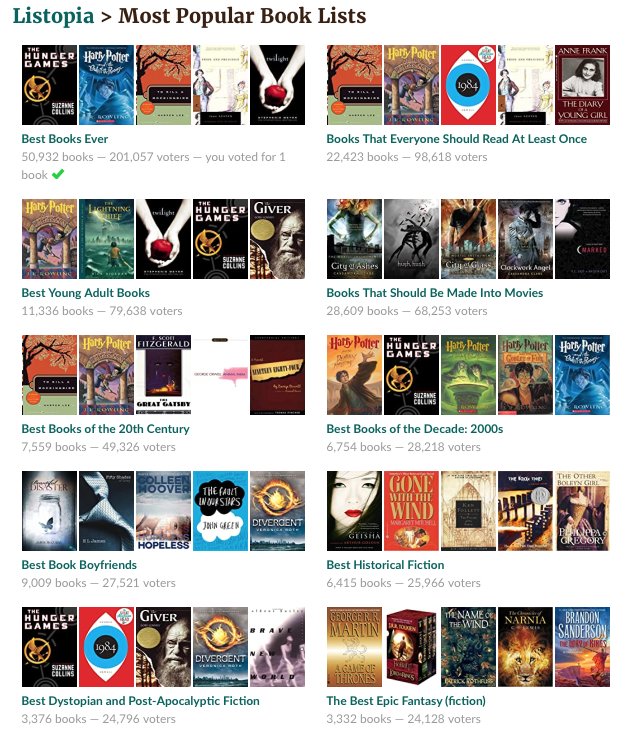
Public library websites have reading lists developed by librarians. And just Googling a topic you’re more interested in will help you find great options. For example, when I typed “anti-racist reading lists” into the search box, I got over 33 million hits, and just selecting the top three yielded sources for a good start:
- New York Times: An Anti-Racist Reading List (compiled by Ibram X. Kendi)
- Phoenix Public Library: An Anti-Racist Reading List (compiled by librarians)
- WBUR-FM, Boston: A Reading List on Race for Allies Who Want to Do Better (compiled by Arielle Gray)
Famous people have famous reading lists. Previously, presidents have made their reading lists public, such as here, and here. Productivity author James Clear maintains a website called 100 Good Books To Read, which recommends far more than 100 books, with lists broken down by category. Billionaire Bill Gates maintains an entire section of his GatesNotes blog for discussing the books he recommends.
There’s even a website called The Reading Lists, collating everything from “Best Tear Jerkers” to “The Most Important Books on Dinosaurs” to “Must Read Books for Aspiring Writers.” Whether you want to find more books like the ones you love, or you want to explore a new genre, there are book lists to serve your needs.
You can also get great recommendations from blogs, podcasts, and apps. For example:
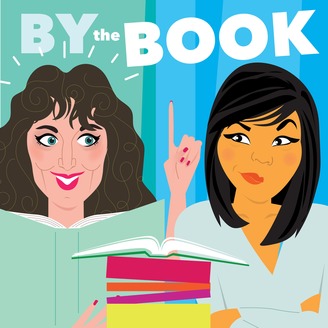
By The Book Podcast – Imagine if you combined a self-help reality show with a podcast about book reviews. For each episode, podcast veterans Jolenta Greenberg and Kristen Meinzer (along with their long-suffering and fan-favorite husbands) summarize a self-help book and then live by the precepts of that book for two weeks.
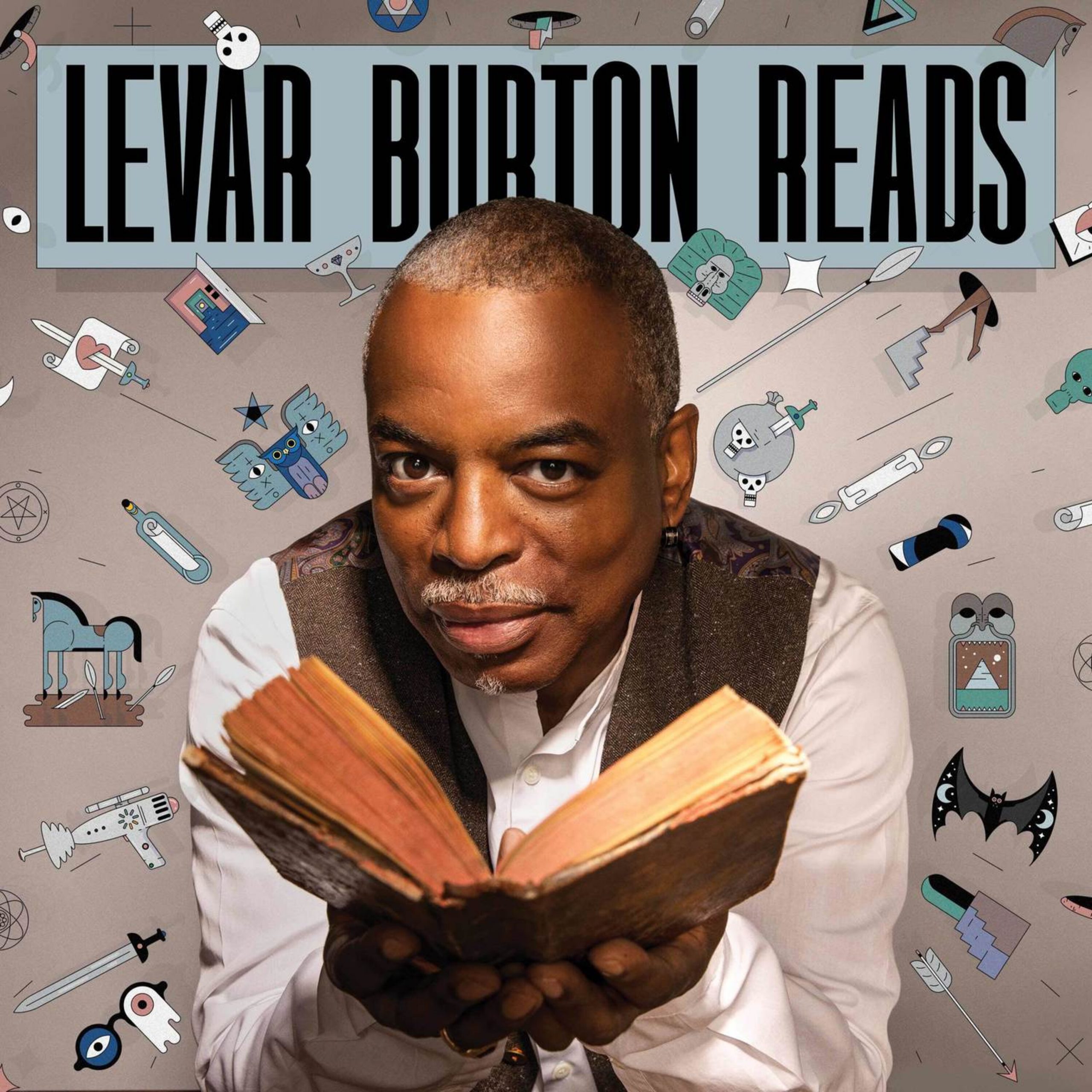
LeVar Burton Reads – Yes, the same Reading Rainbow star who spent 26 years helping get kids excited about reading has an inspiring reading-themed podcast for adults. In each episode of LeVar Burton Reads, now in it’s third year, Burton reads (in the same soothing voice that captivated generations) a piece of short fiction he chooses himself, in genres ranging (in his own words, in a 2017 interview with The New Yorker), “from fantasy to mystery to comedy and, of course, my go-to, science fiction.” Authors represented on the podcast have included Octavia Butler, Joan Aiken, Ray Bradbury, N.K. Jemison, Neil Gaiman, Haruki Murakami, and more.
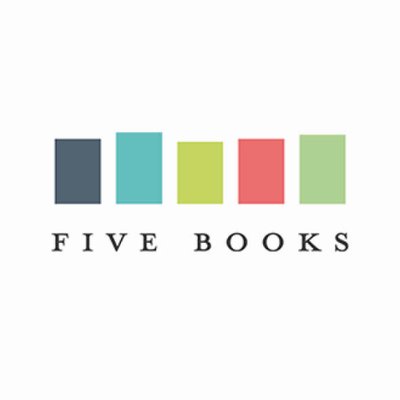
Five Books – What if, when you wanted to read a book, you could ask experts on that topic what you should read? That’s the premise of Five Books, with an archive of more than one thousand interviews and five thousand book recommendations, offering two new interviews each week. For example, humorist Andy Borowitz gives his list of the best books on comic writing, while biographer Andrew Roberts offers up the best books on Napoleon.
Non-fiction topics cover art, business, economics, history, health and wellness, language, philosophy, politics, psychology, religion, sports, technology and more, and include titles for children as well as adults. Fiction-related recommendations run the gamut of genres from classic and contemporary literature to literary criticism, from crime and mystery to romance and horror, and from poetry to science fiction.
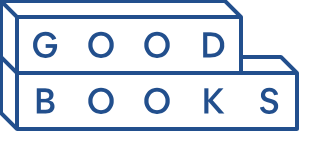
GoodBooks – This site describes itself as “Books recommended by successful people” – with 8500+ recommendations from “the most successful and interesting people in the world.” A little self-aggrandizing? Maybe. But the experts hail from media, technology, journalism, science, education, venture capitalism, design, entrepreneurship, activism, and other professions, and they recommend titles ranging from classics to some of today’s best-sellers, and there’s even a Top 100 most-recommended list. (Is 100 too daunting? How about just enough titles to read a book a month with GoodBooks’ top 12 list?)
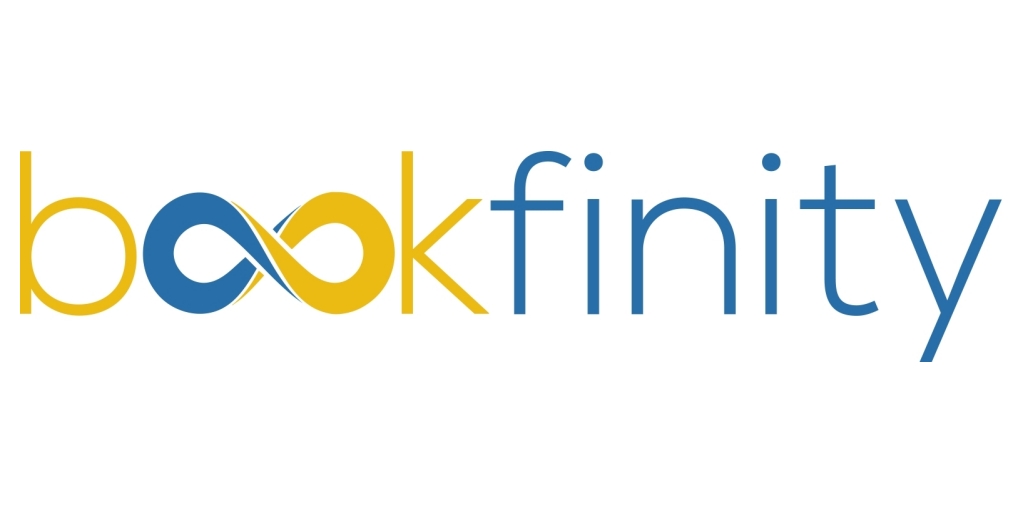
Bookfinity – Perhaps you’re less interested in what the experts like to read and would prefer a fairy godparent to zap up the perfect read for you? Bookfinity uses the quirkiness of those social media “Which Marvel superhero are you?”-type quizzes to create recommendations customized for your reading preferences. (One note: you must create an account to access recommendations.) Once in the system, you can rate whether you like or hate Bookfinity’s recommendations for you, improving the algorithm.
8) Change formats.
I am a book snob. I like the weight of a real book, and want to be able to flip back-and-forth, check the “feel” of how many pages are left until the end of the chapter or the book, and even stop to look at the author photo. I tend to forget about books I’ve downloaded to the Kindle app on my iPad, whereas my To Be Read shelf is near and always reminding me what’s next. And honestly, unless I’m listening to an audiobook with a compelling plot, I tend to daydream.
But I grant you – sometimes, you just need to change it up.
You can’t (safely) read a book in the bathtub, but you can put your Kindle (or other ereader) in a zip-lock bag and read until your fingers get prune-y. Your local bookstore or even online shop may run out of stock, but ebooks and audiobooks are available at the click of a button.
During the first four months of the COVID-19 pandemic, my public library was closed and I couldn’t get my usual hefty pile of books. But you know what I could do? I could sit in my PJs at 2 a.m. and borrow digital copies of books at no cost by using my library’s digital platforms like Hoopla, Overdrive (accessible via the Libby app), and RBDigital to acquire books, ebooks, and audiobooks. (They also have magazines, comic books, albums and movies.)
And sometimes, you need a little support. Storyline Online, sponsored by the Screen Actors Guild, features celebrities (like Rita Moreno, Lily Tomlin, Rami Malek, and Kevin Costner) reading children’s books. That might be just what you need to save yourself from another night of reading your tiny human Hop On Pop on repeat, perhaps even giving you time to read your own books.
Experiment to see what book formats you find compelling. If listening to a novel while you cook or drive means you’ll get to submerge yourself in a story you’d otherwise miss, isn’t it worth trying?
9) Track Your Reading
You may wonder how tracking your reading helps you read more. But the more you measure your effort, the more inclined you are to improve that effort. Also, keeping track of what you’ve read prevents you from accidentally buying or borrowing (and then reading) the same book more than once.
The no-effort way to track your reading is to keep your read and to-be-read books separate. Once a book is completed, move it to the “read books” area. Of course, I wouldn’t be much of a professional organizer if I didn’t encourage you to let go of books you’ve read and have no intent (or desire) to read again. But if you let go of books to prevent them from piling up, there’s not much of a record of what you’ve read. However, there are other options.
Keep a reading journal. Take quick notes in your phone or keep track of your reading habits, favorite quotes, and thoughts on what you’ve read in a bullet journal.
Log your books digitally. Opt for something simple, like a sortable Excel or Google spreadsheet. There are also myriad book journaling apps, like Book Log, ReadingList, and Litsy.
Track what you’ve read in a website that lets you log, rate, and review books. I like how Goodreads lets me create a pathway for tracking books. When I hear of a book I might like to read, I enter it in the search box; when it comes up, I click “Want to Read.” If I start reading, I change the status to “Currently Reading” and later to “Read.” Then I can give it from one-to-five stars and write a review.
Marking the book as “Read” puts it into a chart of “My Books,” which I can sort by title, author, average rating, my rating, date I added it to my account, and date I finished reading it. I can also view and edit my reviews from this page, and change the virtual shelf on which I’ve put it. You can add your own shelving categories. Mine include, “Books by My Friends and Colleagues” and “Books That Would Make Good Gifts.”
Logging books comes in handy when someone asks me what I thought of a book. One of my favorite fiction genres is time travel; when you read a lot in one genre, it’s easy to confuse the plots, so seeing my ratings and reviews helps. It also helps me find titles I want to recommend. Recently, a friend told me that her daughter likes reading “art theft” books like Chasing Vermeer. I remembered that I’d accidentally read a book for younger readers along those same lines, but couldn’t recall the author. One quick scroll through the my reading list and I found Walls Within Walls, which I’d read in 2011!
10) Participate in Reading Challenges
I walk for exercise, but until I got a Fitbit, I never stuck to one regimen for very long. For a while, just trying to hit 10,000 steps a day kept me at it, but at the start of 2020, my best friend and I started doing the Workweek Hustle Challenge, where we “compete” (gently) against one another on steps counted. Her son recently joined in and invited us to to achieve certain measures of steps, miles, and minutes of exercise on Fitbit’s BINGO card contests.
Similarly, while I enjoy practicing my Italian lessons on Duolingo, keeping my travel partner’s score (each week, if not daily) gives me that extra boost.
Goodreads runs a challenge where you announce to your friends how many books you intend to read for the year; watch your ticker count up as you read, and note whether you are “ahead” or “behind” for the year. Book bloggers run some pretty famous challenges where you can amass different types of reading experiences: read a book in translation, read a book in a genre you’ve never explored, read a book with fewer than 100 (or more than 1000) pages, etc. You might want to try:
- The Modern Mrs. Darcy 2020 Reading Challenge
- 52 Books In 52 Weeks (multiple challenges)
- World Reading Challenge: Books Around the Globe 2020 (from Tale Away)
- The Master List of Reading Challenges from Girl XOXO (with a fancy and complex tracking spreadsheet to log all of the reading you do for all of the challenges in which you participate)
- Epistolary Reading Challenge (I love a book written in letters!)
- Newberry Reading Challenge (to read Newberry- & Caldecott-winning children’s books)
- Pop Sugar Reading Challenge (There’s also a Summer 2020 challenge.)
- Penguin/Random House #Read20In20 Reading Challenge
11) Read Books About Reading Books
Although it’s not everyone’s cup of tea, I find that reading books about the enjoyment of books boosts my enthusiasm when I’m not feeling up for adventurous bout of reading. Author-Librarian Nancy Pearl, who is so beloved among readers that she has her own action figure, has made a name for herself with her Book Lust series (Book Lust, More Book Lust, Book Lust to Go, and Book Crush), collections that recommend books for every taste, moment, and mood.
Consider books that recommend titles based on books you like or experiences you’re going through, such as Ella Berthoud and Susan Elderkin’s The Novel Cure: From Abandonment to Zestlessness – 751 Books to Cure What Ails You, Mirchael Dirda’s Browsings, and Sandra Newman and Howard Mittelmark’s snarky Read This Next: 500 of the Best Books You’ll Ever Read.
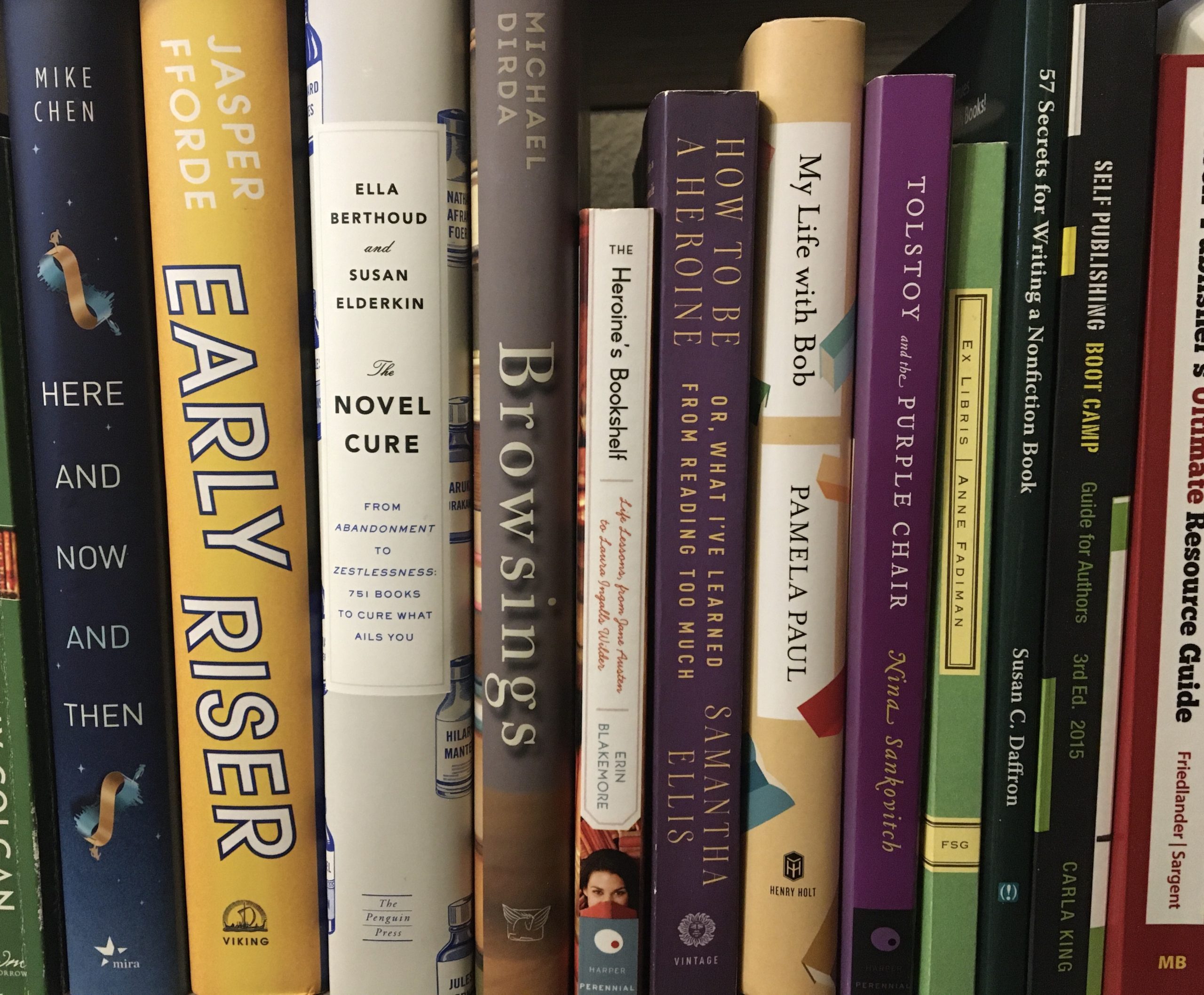
For years, novelist Nick Hornby had a monthly column in the Believer where he detailed the books he’d bought and the books he’d read (with minimal crossover in any given month), and combined short-term memoir and (award-winning) criticism. The columns were collecting in a series of books, including The Polysyllabic Spree, Shakespeare Wrote for Money, and Housekeeping vs. The Dirt.
Finally, there are just some great books of essays about books. The best, for my money, is Anne Fadmian’s Ex Libris: Confessions of a Common Reader, but my TBR still includes:
- My Life With Bob: Flawed Heroine Keeps Books of Books, Plot Ensues
- The Heroine’s Bookshelf: Life Lessons from Jane Austen to Laura Ingalls Wilder
- How To Be a Heroine: Or, What I’ve Learned from Reading Too Much
12) Develop an appetite with an ice cream sample.
No matter how many recommendations you get, sometimes, you just have to sample the material to know if it’s a good fit.
One trick is picking a specific page number, say page 53, and checking out the writing style without any preconceived notions of the book. If that random page appeals, it’s a good sign. We’re not spending much time in brick & mortar bookstores these days, though, so another option is the “Look inside the book” feature at Amazon, which allows readers to read introductions, tables of contents, and sample chapters to get a sense of whether a book is a good fit.
It can be difficult to find a compelling non-fiction book, especially for professionals with so many buzz-wordy titles vying for their attention. For them, there are online services that allow you to sample books by getting summaries of the material.
Next time, we’ll be looking in-depth at sites like Sipreads, 12 Minutes, Read It For Me, Blinkist, and more to help you get a birds’-eye-view of important non-fiction titles and find the books most worthy of you investing your reading minutes.
Until then, happy reading!


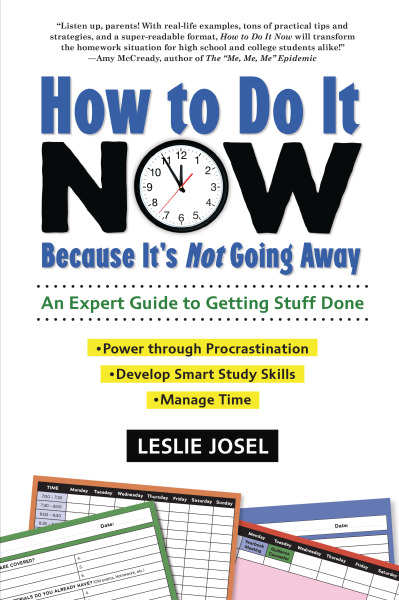



Follow Me